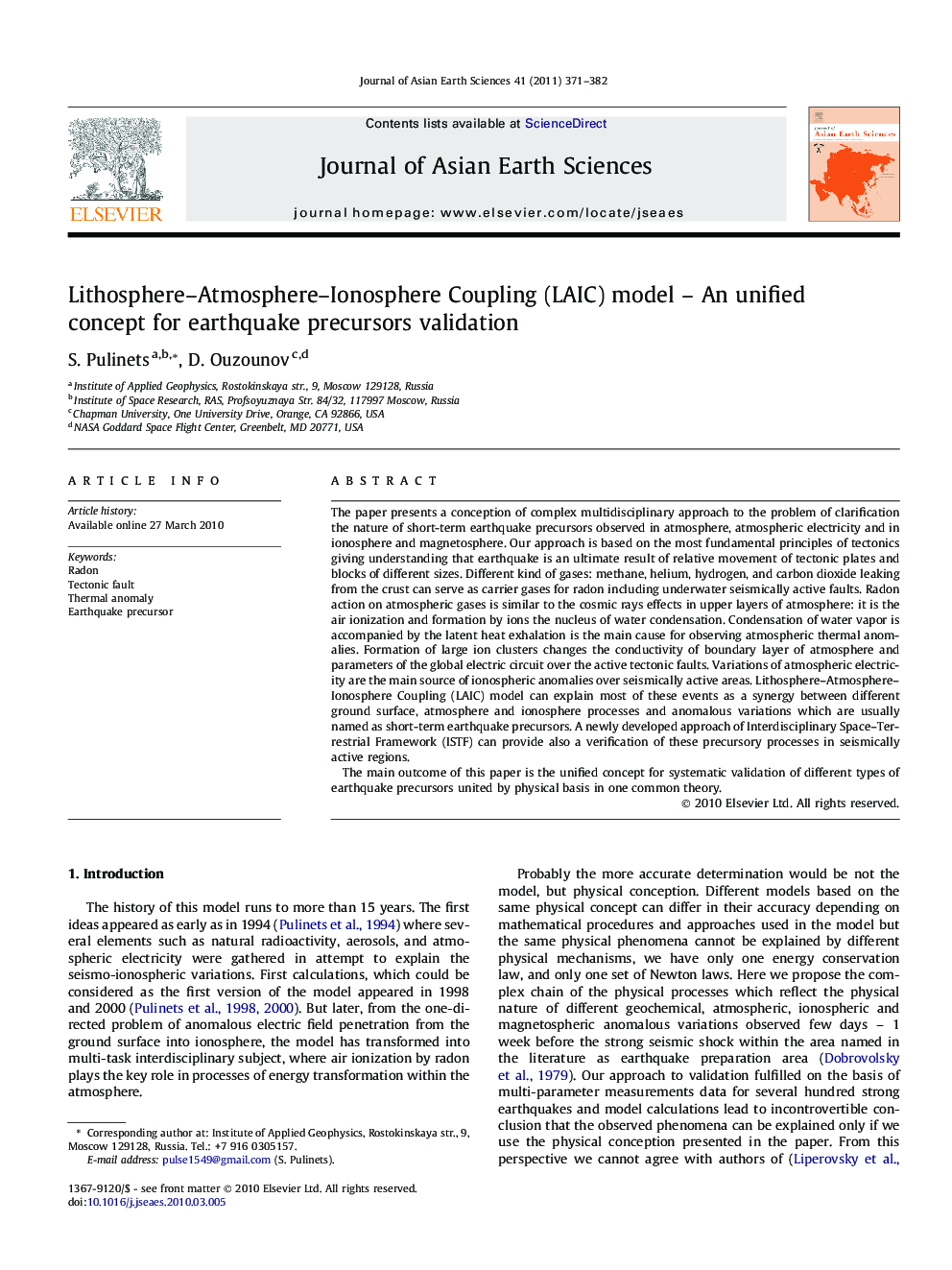| Article ID | Journal | Published Year | Pages | File Type |
|---|---|---|---|---|
| 4731832 | Journal of Asian Earth Sciences | 2011 | 12 Pages |
The paper presents a conception of complex multidisciplinary approach to the problem of clarification the nature of short-term earthquake precursors observed in atmosphere, atmospheric electricity and in ionosphere and magnetosphere. Our approach is based on the most fundamental principles of tectonics giving understanding that earthquake is an ultimate result of relative movement of tectonic plates and blocks of different sizes. Different kind of gases: methane, helium, hydrogen, and carbon dioxide leaking from the crust can serve as carrier gases for radon including underwater seismically active faults. Radon action on atmospheric gases is similar to the cosmic rays effects in upper layers of atmosphere: it is the air ionization and formation by ions the nucleus of water condensation. Condensation of water vapor is accompanied by the latent heat exhalation is the main cause for observing atmospheric thermal anomalies. Formation of large ion clusters changes the conductivity of boundary layer of atmosphere and parameters of the global electric circuit over the active tectonic faults. Variations of atmospheric electricity are the main source of ionospheric anomalies over seismically active areas. Lithosphere–Atmosphere–Ionosphere Coupling (LAIC) model can explain most of these events as a synergy between different ground surface, atmosphere and ionosphere processes and anomalous variations which are usually named as short-term earthquake precursors. A newly developed approach of Interdisciplinary Space–Terrestrial Framework (ISTF) can provide also a verification of these precursory processes in seismically active regions.The main outcome of this paper is the unified concept for systematic validation of different types of earthquake precursors united by physical basis in one common theory.
